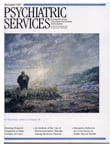Substance Abuse Disorders in Clinical Practice, second edition
Dr. Edward Senay set himself the ambitious goal of writing a book that is compact, yet comprehensively addresses substance use disorders and their treatment. In this primer, now in its second edition, he is relatively successful, packing a lot of material into a small space. His extensive clinical experience and familiarity with recent developments are obvious. However, some unevenness in the treatment of different topics is evident.
The book begins with two chapters on the definition of substance use disorders, interviewing techniques, diagnosis, and a general approach to treatment. They include many very good ideas. Unfortunately, too much material is crammed into too little space, and the organization of topics is confusing. The reader is thrust too quickly from one topic to another, without adequate background or preparatory material.
The rest of the book is much better. The author excels at describing the medical management of substance abuse disorders. Individual chapters cover alcohol, opioids, marijuana, and tobacco, while depressants and stimulants are grouped together. Throughout these chapters, the author weaves together a nice combination of research findings and clinical wisdom.
The chapters on opioid dependence and its treatment—methadone maintenance and therapeutic communities—are the highlights of the book. Included are detailed instructions on how to evaluate and manage opioid dependence in the general medical setting as well as in such specialized programs.
Chapters on alcohol and other substances are strong on pharmacological and medical concerns. However, it is difficult to derive a coherent treatment approach from this text. The chapter on dual disorders sets a nice tone for how to integrate mental health and addiction treatments, but is spotty in the disorders considered. Bipolar disorder is notably absent, and schizophrenia is addressed only in the context of differentiating it from PCP psychosis. The chapter on toxicology is a solid addition to a primer on substance abuse treatment.
Although various treatment methods are mentioned, only the Minnesota model and therapeutic community approaches are fully described. More space might have been devoted to skills training and other behavioral treatments. The book focuses on patients with moderate to severe dependence who present for treatment. Consequently, the well-established efficacy of brief interventions in primary care settings is not mentioned.
The spectrum of substance abuse is discussed, but the author gives the impression that all patients with substance abuse problems require specialized addiction treatment programs. Because nonpsychiatric physicians are a primary audience for Dr. Senay's book, this perspective is unfortunate. However, the book would be helpful to professionals working within a specialized addiction treatment program.
Dr. Willenbring is associate professor of psychiatry at the University of Minnesota in Minneapolis.



